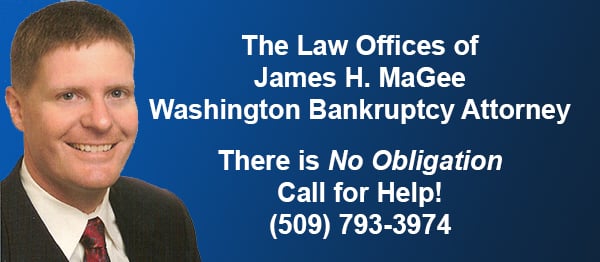The Wall Street Journal’s “Smart Money” feature states it clearly: bankruptcy can help improve your credit score over the long term, even if your score hasn’t declined very much.
Just being cautious with your credit after bankruptcy is of number one importance, according to “Smart Money”. There are many consumers who may see quick gains in credit score recovery from a bankruptcy, and other consumers for whom a bankruptcy filing can arrest an otherwise inevitable long term credit score slide.
Consumers who fail to significantly reduce the amounts owed on high balance credit accounts my eventually see a decline in their credit score. Carrying high balances on credit over time can eventually be as harmful to your credit score as late mortgage payments, repossessions, or delinquent accounts placed with bill collection companies.
Some consumers may already have made payments late, missed payments altogether, or have had accounts turned over to debt collectors. These consumers are probably already out of the “good credit” 700+ credit score range. A credit score of 850 is considered “perfect”.
John Ulzheimer, president of Credit.com Educational Services, a consumer credit education group, is quoted in an article entitled “Declaring Bankruptcy Can Improve Your Credit Score” in ”Smart Money” by Aleksandra Todorova. Mr. Ulzheimer asserts that after filing for bankruptcy, consumers who fall into either the high balance or struggling to make payments categories may see their credit scores increase, depending upon the point where they have fallen on the credit decline trajectory. Why? To start with, credit reports are largely wiped clean with a bankruptcy filing.
According to Ulzheimer, many consumers see a fairly quick improvement in credit scores after bankruptcy. Here’s why: When calculating scores, the formulas developed by Fair Isaac (the company that calculates the most widely used credit score, known as the FICO score) are set up to grade someone’s credit standing as compared with that of consumers in a similar financial position. To do that, Fair Isaac divides consumers into 10 groups, using what it calls “score cards”. It then ranks the consumers in each group based on the others in the group. One of these score cards is bankruptcy filers.
With a bankruptcy filing, the FICO score is then determined based on how one does after bankruptcy compared with other bankruptcy filers, explains Fair Isaac spokesperson Craig Watts. The reason? Fair Isaac has found this to predict credit risk better. ”It’s a much fairer comparison,” says Mr. Watts. ”You’re not compared with people with rosy, perfect reports.” Thus with good after bankruptcy credit management, a good score in the 700s isn’t impossible, and when the bankruptcy drops off of your credit record in 7-10 years, you might even then hit that perfect 850.
The “V” Shaped Curve Leads to Inevitable Credit Recovery
In her article on About.com entitled, “How Much Will Bankruptcy Hurt Your Credit Score”, LaToya Irby, Credit / Debt Management Guide, takes us through the decline and recovery of a consumer credit score in various scenarios. The “worst case” scenario for a bankruptcy filing might be a temporary credit score drop of a mere 150 points for someone with an already mediocre credit score of 680-690, and even less than 150 points if a credit score is already in the troubled 500-650 range. If one’s credit score is already coasting down to 680-690, then bigger problems are probably already on the way. The good news is that a bankruptcy filing can 1) end the days of that forever lingering sub-700 mediocre to poor credit score or 2) halt and then reverse a downward-moving credit score trend. The reason is that with a long term credit score of 680-690, you will not receive many low-rate credit offers anyway, so a bankruptcy filing could easily be a step in the right direction to better credit offers in the near future. So consider taking the bankruptcy hit now to strip away the credit disaster, and then begin to rebuild a better financial future.
Ms. Irby does relate that if a consumer’s credit score is really high—a score of 780, for example—a bankruptcy filing could lower the score by 240 points to a poor score of 540. However, starting from that low point, a credit score can recover with amazing speed to the point of qualifying for a home mortgage in as few as two years after bankruptcy. Better yet, the consumer might even be able to comfortably afford the mortgage without the crushing debt burden eliminated after bankruptcy.
Is Chapter 13 better than Chapter 7?
Generally, bankruptcy in Chapter 13 where the debtor makes full or partial repayment of debts according to a reorganization plan is not better for rebuilding credit. A Chapter 7 “straight bankruptcy” filing offers the best financial recovery strategy for most consumers. In Chapter 7, all or nearly all debts are wiped out in a quick and short proceeding without any repayment required. Many people misunderstand Chapter 7, and mistakenly believe that they will lose their house in a Chapter 7 and that their car or 401k savings plan will be taken away. This is not correct. Rarely, if ever, is any property or item taken away in Chapter 7, and consumers can keep a house and car in Chapter 7 if they wish, so long as any mortgage or car loan payments are kept up. Ms. Irby of About.com Guides researched the question of whether 7 or 13 was better for quick credit recovery, and decided that Chapter 7 is better for a quick credit score recovery, relying upon information released by FICO.
In 2010, the Fair Isaac Company, the provider of the popular FICO credit scoring model in which a score of 850 is considered a “perfect” credit score, published information about how bankruptcy can affect a credit score by proving some mock scenarios with different credit profiles. The FICO mock examples did not differentiate between the effect of Chapter 7 and Chapter 13 bankruptcies, so the proprietary and secret FICO formulas do not seem to prefer or favor a debtor who makes full or partial repayment through a Chapter 13 bankruptcy plan. This argument seems to suggest that most consumers might as well file for Chapter 7 when it comes to FICO credit scores, because a Chapter 7 filing is over so much more quickly than a three to five year Chapter 13 full or partial debt repayment plan. LaToya Irby authored an interesting article entitled “What Your Credit Score Is Made Of” that describes the components that make up consumer credit scores in more detail.
Credit Restoration 101
Restoring credit after bankruptcy is not nearly so hard as people might think, and there is an easy rule of thumb to begin the speedy recovery of a FICO credit score. That is, simply maintain a good credit record with any accounts which survive the bankruptcy, including child support payments, utilities, mortgages, and car loans that are kept after bankruptcy.
Ask.com Guide’s Ms. LaToya Irby sums it up: ”You might be surprised to see how soon after bankruptcy you begin receiving credit card offers again. If you file for bankruptcy, know that your credit isn’t lost forever.”
Aleksandra Todorova of the Wall Street Journal “Smart Money”‘s agrees: “[H]ere’s some surprising news: In many cases, the damage done (by bankruptcy) to one’s credit score isn’t nearly as bad as expected. Over the long run, obtaining a score high enough to make you eligible for very competitive rates isn’t out of the question.”
Advanced Credit Recovery
Consumers can turbocharge their after bankruptcy FICO credit score recovery with a little further reading and follow-up action. There are a number of online guides and some great books available to help you learn how to speed up your FICO credit score recovery after bankruptcy. Consumer debt expert Gerri Detweiler, www.gerriderweiler.com, is the author of “The Ultimate Credit Handbook: How to Cut Your Debt and Have a Lifetime of Great Credit, Third Edition,” for example. For starters, the first four credit recovery steps recommended in the aforementioned WSJ’s “Smart Money” column are really easy steps to get a credit score back into the desirable 700s – maybe even within two years. Here’s a summary:
(1) Damage Control. Make sure that all the accounts listed in your bankruptcy are listed in your credit report as $0 balances and/or “discharged in bankruptcy” because if the creditor keeps erroneously reporting it as having a collectible balance, it will slow down or stop your credit recovery progress. You may get your credit report at www.annualcreditreport.com to check for erroneous reporting, and then learn how to dispute erroneous information on your credit report.
(2) Get a New Credit Card. If you can’t get a credit card with a small credit limit, then search for a lender who will issue you a “secured” card. A secured card is one that is backed by a modest cash deposit. Look for a lender who promises to let you “graduate” to a regular unsecured credit card following 18 months or so of on-time payments.
(3) Piggyback. If you have a very trusted friend or relative with good credit repayment habits, ask that person to allow you to become an “authorized user” on one of their credit cards. This may eventually “bootstrap” your friend’s good payment history into your credit report history.
(4) Bigger Loans. I have seen some people get a car loan while they are still in the 4 month Chapter 7 process. For others, a car loan within a few months after bankruptcy is often a possibility. Of course, only finance a car loan if in fact you really need a car. Should the need arise, start shopping for a lender and auto dealer who will work with you. It is important to be choosey about the terms of any car loan. If you are shopping when the auto dealership is under a crunch to make a sales quota, you might find that the auto dealership needs you more than you need them. Do not accept a ridiculous loan interest rate! If the car lot finance manager cannot get you a reasonable after bankruptcy interest rate of 8-14%, then move on immediately. Find a more flexible lender. I have heard tales of some people even getting a 5.0% interest rate car loan—or less—after bankruptcy on a car loan. Be tough, be polite and be fair during your negotiations, and you may be surprised at the favorable outcome.
Gerri Detweiler says that sometimes consumers have to face the music and file bankruptcy. Rebuilding a credit score into the FICO 700s range after bankruptcy isn’t necessarily that difficult, especially by starting with the four good credit restoration fundamentals reviewed above.
Ideas for Action
Saving a credit score in the short term shouldn’t be seen as a good reason to avoid or postpone filing for bankruptcy, particularly if you have either high debt balances or are struggling to make payments on time. If you find after a sober examination of your finances that you are unable to completely clear consumer debts to zero within a couple of years, bankruptcy may be the prudent choice. Even if your credit score isn’t below 700 currently, it is quite likely that it will end up there anyway if your financial resources are stretched too thinly. ”You have to be realistic about your ability to get back on your feet financially by repaying your debts within a reasonable time without an extreme or ridiculously small household budget which is not long-term practical” says Ms. Detweiler.
Articles quoted or referenced in this article:
How Much Will Bankruptcy Hurt Your Credit Score
http://credit.about.com/od/bankruptcy/qt/How-Much-Will-Bankruptcy-Hurt-Your-Credit-Score.htm
Credit expert Gerri Detweiler
http://www.gerridetweiler.com/
Amazon.com: The Ultimate Credit Handbook: How to Cut Your Debt and Have a Lifetime of Great Credit, Third Edition (9780452283923): Gerri Detweiler: Books
http://www.amazon.com/Ultimate-Credit-Handbook-Lifetime-Great/dp/0452283922
AnnualCreditReport
https://www.annualcreditreport.com/cra/index.jsp
How to Dispute Consumer Credit Reporting Errors and Fix Your Credit Report – Money Management
http://www.moneymanagement.org/budgeting-tools/credit-articles/credit/how-to-dispute-consumer-credit-reporting-errors-and-fix-your-credit-report.aspx
Declaring Bankruptcy Can Improve Your Credit Score – SmartMoney.com
http://www.smartmoney.com/borrow/debt-strategies/declaring-bankruptcy-can-improve-your-credit-score-20681/



